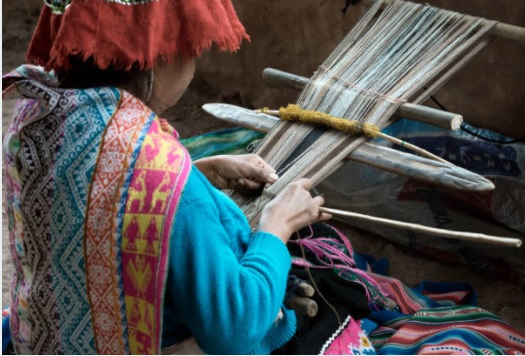Dec 07, 2025
Dec 07, 2025

Weavers, weaving at break of day,
Why do you weave a garment so gay? . . .
Blue as the wing of a halcyon wild,
We weave the robes of a new-born child.
Weavers, weaving at fall of night,
Why do you weave a garment so bright? . . .
Like the plumes of a peacock, purple and green,
We weave the marriage-veils of a queen.
Weavers, weaving solemn and still,
What do you weave in the moonlight chill? . . .
White as a feather and white as a cloud,
We weave a dead man's funeral shroud.
Did Sarojini start writing about Indian weavers, palanquin bearers, fishers, boatmen and bards herself or someone else suggested her to do so? And it was none the else but Edmund Gosse and Arthur Symons who told her to celebrate, sing of India. Let us think of Sarojini with Edmund Gosse and Sir Arthur Symons and let us without them in the absence of the British mentors. None has striven to know, none has striven to care about. Let us think of Sarojini without Indian stuffs and connections. Poetic talent cannot get reared so easily if there are no gardeners to look after the garden of poesy. But in the case of Sarojini she got it everywhere.
Indian Weavers is without any doubt a song so lovely and charming bringing to our memory the weavers at work, making the cloth, netting, putting on the frame, measuring, printing and designing however be the method of their work. To read the poem is to be reminded of the textile industry, handloom and machine-made cloths. Here mainly the dreamy and colourful side has been touched upon. Something it is of course of the veil and shroud. Weavers, Indian weavers, how did they make the cloth? How had it been their craftsmanship?
Addressing the weavers in an indirect way with the answer tendered to or given, the poetess begins her poem with a lyrical excellence of her own. She asks how they are making the garment so attractive, catching the eyes of the on-lookers, making the dreamers dream about, putting desires on fire. The weavers respond to that they make the garments for a new-born babe so blue like the wings of the wild halcyon. Here the picture and image of a wild halcyon dances before the eyes.
Weavers keep weaving, keeping busy with work even at the fall of the night. Again, she asks why the garments are so bright. What the reason behind? How their art, weaving art and colour design? How their concept on the canvas of the cloth? Weavers respond it that they make green and purple marriage veils for the queens to put on, wear it. The marriage veils appear to be just like the peacock feathers enchanting us with the colour design so dreamy and pearly indeed, looking rainbowish and drizzling. Here the mind gets lifted to embroidery work and bespangled designs.
But same weavers are found to be solemn and grim when the talk of the white cloth arises it. Dressed in whites sometimes looks it well, but sometimes the whites are used for the shroud to be cast over and cover up. Nuns and widows too don it. In the moonlight chill they weave the white cloth. Moonlight has been pulled in to suit the poetic purpose.
Some colour concept and the fabric design go on doing the rounds here in this poem. The poetess has added poetical colours to it as because weavers do not inculcate in specific times for weaving cloth. But something of it depends on colour choice and perception no doubt. They make cloth keeping in mind common sales, festivities and age bars. What do the people like? What is the occasion of use? But notion and rationality are something different. Something is definitely relating to capacity. Can many afford to purchase? At that time many used to go half-fed, half-clothed. Actually, just for a colour match she has arranged the scenes for the poem as she does it in the poem pertaining to glass bangle-sellers. The contours of fabrics, art work and motifs designed, colours given, painted and printed, how to tell of an age gone by and the history of art coming down to, continuing for so long with the change in models and techniques?
Image (c) istock.com
01-May-2021
More by : Bijay Kant Dubey